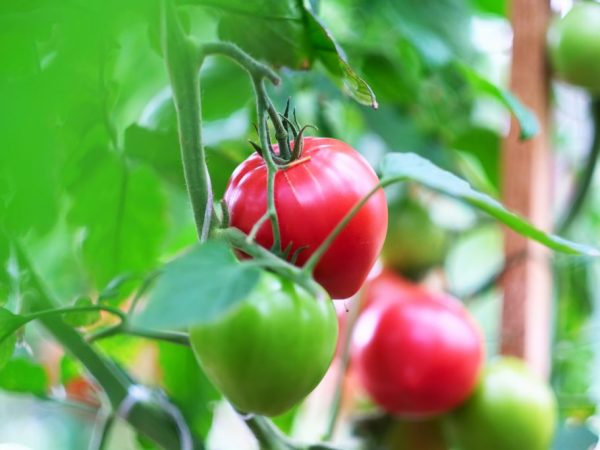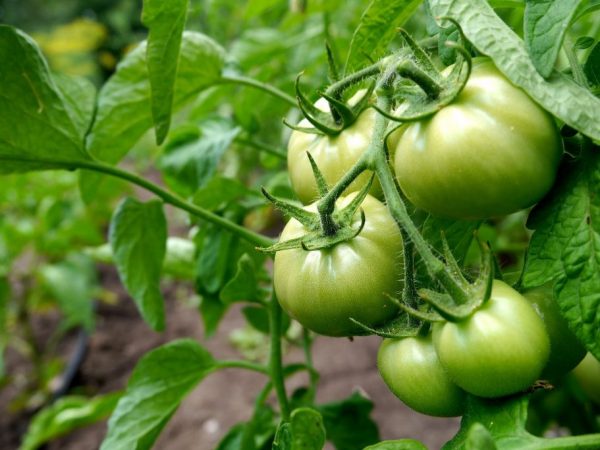Description of Cardinal tomatoes
All housewives know that fresh vegetables are needed to prepare green salads. One of the ingredients is tomato, or, as we most often call it, tomato. A universal vegetable, in this case, will be the Cardinal tomato. He received his name in honor of the French politician, the famous Cardinal Mazarin.

Description of Cardinal tomatoes
Tomatoes of this variety are most often grown with a garter to the supports, and this produces a tree - a garden, which can be seen in the photo. If they are not tied up, then the stems will fall on the ground or, even worse, break.
Characteristics of the Cardinal variety
The official description of the culture and the characteristics of the variety says that the fruits - Cardinal tomatoes, can have a record weight. The characteristic that these plants differ is quite positive:
- Variety Cardinal is semi-determinant.
- Plant height can be up to 2 meters and more.
- Fruits are heavy up to 900 gr.
- The tomato is delicious and juicy.
- Refers to medium-late species, the fruiting period of which is up to 120 days.
- Productivity from one bush in the limit of 5 kg.
The undoubted advantage of the Cardinal variety is its large fruit size, which makes it possible to obtain a large amount of juice for winter harvesting.
Of course, the first crop is always larger, but the subsequent fruits are also not small. Their weight ranges from 300gr and more. The skin of the fruit is firm and firm, does not crack when kept fresh.
The positive advantages that distinguish consumer reviews include:
- cold resistance;
- the similarity of seeds is fast and one hundred percent;
- the culture is resistant to diseases and viruses;
- the fruits are perfectly preserved when lying down;
- the first tomatoes appear 110 days after sowing the seeds;
- increased productivity is observed;
- the variety is versatile in use.
Reviews of farmers and owners of private gardens have reports of some of the shortcomings that can be encountered when growing a Cardinal tomato:
- Bushes require a mandatory garter.
- The plant must be formed.
- When grown outdoors, the yield is reduced.
- Not the ability to preserve whole.
But, despite this, the Cardinal tomato variety is widespread. They fell in love with housewives for their taste, increased productivity and an abundance of juice for preservation for the winter. Fresh, these are vitamin salads. And during processing, these are dressings for borscht, and vegetable casseroles, and an ingredient for pizza and a lot of things that a skilled housewife can prepare.
Description of the Cardinal variety
When compiling a register about Cardinal tomatoes, the height of the bush was practically not included in the description. This means that the plant tends to grow indefinitely. That is, if it is not limited, it will turn into a tree. Bushes of this type branch weakly, and foliage also happens, both medium and weak.
Among the leaves of a corrugated structure, an inflorescence appears at a height of 8 leaves. It consists of small flowers, collected in a loose brush.The next inflorescence appears after one or 2 leaves. Each brush contains eight tomatoes.

The plant can bear fruit until the very frost
All the fruits that the Cardinal tomato variety has are large, pink in color, some regional plantings have a light raspberry hue. At the same time, a lighter, sometimes with yellowness, spot at the peduncle can be preserved. When cut, the heart-shaped tomato is divided into small seed chambers. Therefore, the fruit itself, when processed, gives a large amount of tasty, sweet and sour juice.
The plant bears fruit from the beginning of July and practically until frost in the open field.
And the greenhouse, with its own microclimate, can prolong this process while the fruits are being set. This applies to those regions in which the climate is Siberian or if plants are cultivated above the middle zone, closer to the cold regions of the country.
Growing tomatoes
At the very beginning or in the middle of March, it is necessary to sow Cardinal tomato seeds for seedlings. Before that, it is advisable to soak them in fresh squeezed aloe juice or use industrial preparations for quick and friendly germination. For small farms, it is enough to plant the seeds in peat cups or containers containing the peat mixture. For farm greenhouses, greenhouses are suitable, where there should be the same earthen mixture.
After planting the seeds, the soil is sprayed from the spray gun, and in the greenhouses, you can use the installation to create fog. The temperature at which the seeds will be comfortable should not fall below 25 degrees. After the emergence of seedlings, the seedlings need to be dived into other containers and fertilizers applied as growth stimulants. When it comes time to plant Cardinal tomatoes in the ground, you must first fertilize them again.
For planting in a permanent place, light soil is created. It should include:
- humus, preferably rotted long ago;
- wood ash;
- fertilizer superphosphate.
Plants are transferred to greenhouses in the first decade of May, and to fields - a month later, when the threat of frost passes. The planted stems must be immediately tied to the supports. If this is not done, the bushes will break.
After rooting, you can start shaping the bush. It consists in the fact that the stems left for fruiting are not affected by diseases and viruses that accompany thickened plantings. That is why, when planting, it is necessary to observe the number of seedlings per square meter. There should be no more than three of them, the diagrams can be found in the photo. The lower leaves and stepsons are removed, 2 of the most powerful stems are left.
Caring for Cardinal Tomato Plants
The main components of care are watering, loosening the soil, spraying against diseases, fertilizing plants and killing weeds. Young plantings are spilled with a weak solution of potassium permanganate or Fitosporin so that diseases do not spread to your variety and the Cardinal tomato does not suffer from neighboring, infected areas. Soapy solution is necessary to protect plantings from aphids. Slugs can be scared away by using an aqueous solution of ammonia.
When removing weeds from the site, it is possible to mulch aisles and aisles. For this, both straw, humus and peat are most suitable. Mulch will not only prevent weeds from growing, but will also retain moisture in the near-stem area of plants. An important condition for obtaining a consistently large harvest is the use of fertilizers. But here, too, you need to not overdo it.
Conclusion
Analyzing all of the above, we can be convinced of the advisability of growing Cardinal tomatoes. It is good for outdoor cultivation. But especially large yields are produced by tomato in a greenhouse, as you can see in the photo.
By following the farming techniques necessary for plant development, you will get healthy shrubs. They will thank you for your care with abundant and tasty fruiting.And then you can already start processing tomatoes, or creating culinary masterpieces based on fresh tomatoes.


